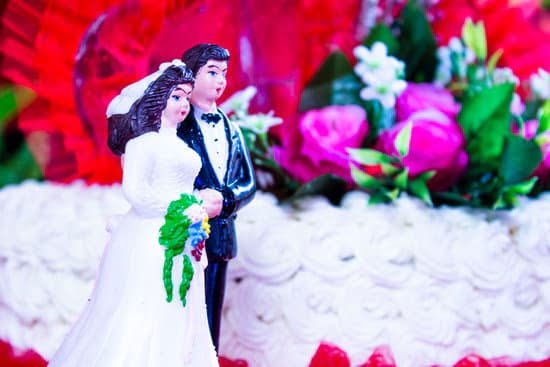Are you wondering how to freeze cakes for decorating? Freezing cakes can be a game-changer when it comes to convenience and preserving the freshness of your baked goods. Whether you’re a professional cake decorator or simply enjoy making beautiful desserts at home, learning how to properly freeze and thaw your cakes can open up a world of possibilities for creating stunning and delicious treats.
When it comes to selecting the right cakes to freeze, not all types are created equal. Certain cakes, such as sponge cakes and butter cakes, are better suited for freezing compared to others. Preparing the cakes for freezing is also an important step in ensuring that they maintain their moisture and texture. Properly cooling and wrapping the cakes before freezing will help preserve their quality.
Once the cakes are ready to be frozen, it’s crucial to store them properly in the freezer to avoid freezer burn or loss of flavor. Additionally, knowing how to properly thaw frozen cakes is essential for maintaining their texture and taste before decorating.
In this article, we’ll cover everything you need to know about freezing your cakes for decorating, from selecting the right type of cake to avoiding common mistakes in the process. So let’s dive in and explore the world of frozen cake decorating.
Selecting the Right Cakes to Freeze
When considering how to freeze cakes for decorating, it is important to start with the right type of cake. Not all cakes are suitable for freezing, and choosing the right one can make a big difference in the final result. Generally, sponge cakes and butter cakes are the best options for freezing. These types of cakes have a dense yet tender crumb that holds up well to freezing and thawing processes.
Sponge cakes, in particular, are a great choice for freezing because they tend to be light and airy, making them less likely to become dense or dry during the freezing process. Butter cakes also freeze well due to their higher fat content, which helps lock in moisture and maintain their texture.
On the other hand, delicate cakes such as chiffon or angel food cakes may not hold up as well when frozen. Their lighter texture makes them more prone to becoming soggy or losing their structure when exposed to freezing temperatures. Additionally, cakes with delicate fillings or decorations may not freeze well, as these elements can become compromised during the freezing and thawing process.
Overall, selecting the right type of cake is crucial when planning to freeze it for decorating later on. Choosing a cake with a sturdy texture and minimal delicate components will ensure that it maintains its quality and freshness after being frozen.
Preparing the Cakes for Freezing
Once you have selected the right cakes to freeze, it is crucial to prepare them properly to ensure they maintain their freshness and texture. The first step is to allow the cakes to cool completely after baking. This will prevent condensation from forming inside the wrapping, which could lead to a soggy cake once thawed. Once cooled, you can begin the wrapping process.
To wrap the cakes, use a double layer of plastic wrap followed by a layer of aluminum foil. The plastic wrap will help keep the moisture in, while the foil provides an extra barrier against odors and freezer burn. It’s important to wrap the cakes tightly to prevent any air from getting in and causing freezer burn.
For added protection, you can also place the wrapped cakes into airtight containers before putting them in the freezer. Make sure to label each container with the date of freezing so that you can keep track of how long they’ve been stored.
When preparing your homemade cakes for long-term storage in the freezer, there are some key steps that will help ensure they maintain their quality when it comes time for decorating. Following these steps will result in delicious, moist cakes that are ready to be decorated whenever you need them.
| Steps | Description |
|---|---|
| Allow Cakes to Cool Completely | This prevents condensation and maintains texture. |
| Use Double Layer of Plastic Wrap + Aluminum Foil | Provides a tight seal and protects against freezer burn. |
| Consider Using Airtight Containers | Provides added protection and helps with organization. |
Freezing the Cakes
When it comes to freezing cakes for decorating, it is important to follow the right steps to ensure that the cakes retain their freshness and texture. Freezing cakes can be a convenient way to prepare for an upcoming event or to simply have a homemade cake ready at any time. Here’s how to freeze cakes for decorating:
1. Allow the cakes to cool completely: Before freezing your cakes, it’s crucial to let them cool down completely. This will prevent condensation from forming inside the packaging, which can affect the texture of the cake.
2. Wrap the cakes properly: Once the cakes have cooled, wrap them tightly in plastic wrap or aluminum foil. For added protection, you can also place them in an airtight container before freezing.
3. Label and store in the freezer: Make sure to label each cake with the date it was baked and its flavor before placing it in the freezer. Store the cakes away from strong-smelling foods to avoid absorbing any odors.
By following these simple steps, you can ensure that your cakes will freeze properly and be ready for decorating whenever you need them.
Remember that when you are ready to decorate a frozen cake, it’s important to thaw it properly by letting it sit at room temperature for several hours. This will allow the cake to thaw evenly without losing its texture and flavor. With these tips on how to freeze cakes for decorating, you can enjoy freshly decorated homemade cakes anytime.
Thawing the Cakes
Room Temperature Thawing
When it comes to thawing your frozen cakes for decorating, the method you choose can greatly impact the final outcome. To maintain the texture and flavor of your cakes, it’s best to thaw them at room temperature. This allows the cakes to gradually come back to their original state without becoming soggy or losing their structure. It’s important to plan ahead and give your cakes enough time to thaw properly, especially if they are large or multi-layered.
Avoiding Microwave Thawing
While it may be tempting to use a microwave for quick thawing, this method is not recommended for frozen cakes. The uneven heating can result in parts of the cake becoming overly soft or even partially cooked, leading to a less than desirable texture for decorating.
Additionally, microwaving can cause frosting or decorations on the cake to melt or become distorted. To ensure that your beautifully decorated cake retains its visual appeal and delicious taste, opt for the more patient approach of room temperature thawing.
Testing for Thawed Consistency
To ensure that your cakes are thoroughly thawed before beginning the decorating process, gently press down on the top of each cake layer with a fingertip. If it springs back and feels soft, the cake is likely ready for decorating. If it still feels firm or cold in the center, allow it more time to fully thaw before moving forward with adding frosting and decorations.
By following these guidelines for thawing frozen cakes before decorating, you can ensure that your beautifully crafted creations taste as delightful as they look when served to friends and family.
Tips for Decorating Frozen Cakes
Decorating a frozen cake can seem like a daunting task, but with the right tips and techniques, it can be a breeze. Whether you’re a professional baker or just enjoy decorating cakes for special occasions, knowing how to freeze cakes for decorating can save you time and stress when preparing for an event. Here are some valuable tips for decorating frozen cakes:
1. Use a Crumb Coat: Before applying the final layer of frosting or icing, it’s essential to apply a crumb coat to the frozen cake. A crumb coat is a thin layer of frosting that seals in any loose crumbs on the cake’s surface, preventing them from mixing with the final layer of frosting. This step ensures that your cake will have a smooth and professional-looking finish.
2. Work Quickly: Once you remove the cake from the freezer and start decorating, work efficiently to prevent the cake from thawing too quickly. Have all your decorating tools and materials ready before taking the cake out of the freezer, so you can focus on creating your design without interruptions.
3. Consider Decorative Elements: When freezing cakes for decorating, keep in mind any decorative elements that may be added after thawing. For example, if you plan to add fresh fruit or edible flowers to your cake, ensure that they are thoroughly dried before placing them on the thawed cake to prevent excess moisture from affecting its texture.
With these tips in mind, decorating a frozen cake can be just as successful as decorating one fresh out of the oven. By properly freezing and thawing your cakes and using these techniques for decorating frozen cakes, you can achieve professional-looking results without sacrificing taste or texture.
Mistakes to Avoid When Freezing Cakes
When it comes to freezing cakes for decorating, there are a few common mistakes that can impact the quality of the final product. One mistake to avoid is leaving the cakes in the freezer for too long.
While freezing is a great way to preserve the freshness of cakes, it’s important not to leave them in the freezer for an extended period. Doing so can affect the texture and flavor of the cakes once they are thawed, resulting in a less-than-desirable outcome.
Another mistake to avoid when freezing cakes for decorating is not properly sealing them. It’s essential to wrap the cakes tightly in plastic wrap or store them in airtight containers to prevent freezer burn and moisture loss. Failing to do so can result in a dry and unappealing cake once it’s time to decorate.
Additionally, one crucial mistake to steer clear of is thawing the cakes too quickly or using heat sources such as a microwave. Thawing the cakes at room temperature is ideal as it helps maintain their texture and flavor. Using heat sources can cause uneven thawing and potentially ruin the cake’s structure.
Overall, understanding these common mistakes and taking steps to avoid them will help ensure that your frozen cakes are perfectly preserved and ready for decorating.
| Common Mistakes | Impact |
|---|---|
| Leaving cakes in the freezer for too long | Affects texture and flavor |
| Not properly sealing cakes | Results in dry and unappealing cake |
| Thawing cake too quickly or using heat sources | Ruins cake’s structure |
Conclusion
In conclusion, learning how to freeze cakes for decorating is a valuable skill that can enhance your baking and decorating experience. By freezing cakes, you can conveniently prepare them in advance and have them ready for decorating whenever you need them. Not only does this method help save time, but it also preserves the freshness of the cakes, ensuring that they taste just as delicious as when they were first baked.
Selecting the right type of cake to freeze is crucial in maintaining its quality. Sponge cakes and butter cakes are ideal choices due to their texture and ability to hold up well in the freezing process. Properly preparing the cakes for freezing by cooling them thoroughly and wrapping them tightly will help prevent moisture loss and freezer burn.
Thawing the cakes at room temperature before decorating is essential to maintain their texture and flavor. Additionally, utilizing tips such as applying a crumb coat can help ensure a smooth and flawless decorating process. Avoiding common mistakes, including over-freezing or improper sealing, will further guarantee that your frozen cakes are perfect for decorating when needed. Overall, by following these steps and guidelines, you can enjoy freshly decorated cakes anytime with ease and confidence.
Frequently Asked Questions
How Do You Freeze a Cake Before Decorating?
Freezing a cake before decorating is a great way to make the process easier. Once the cake has cooled completely, wrap it tightly in plastic wrap to prevent freezer burn. Then, place it in an airtight container or resealable plastic bag before freezing.
Can You Freeze Cake With Buttercream?
Yes, you can freeze a cake with buttercream frosting. It’s important to ensure that the frosting is fully set and not too soft before wrapping the cake for freezing. Use the same method of tightly wrapping in plastic wrap and using an airtight container or bag for best results.
How Do You Freeze and Unfreeze a Cake?
When freezing a cake, it’s crucial to let it thaw properly before serving or decorating. Simply transfer the wrapped cake from the freezer to the refrigerator and let it thaw overnight. Then, remove the plastic wrap and let the cake come to room temperature before frosting or serving for best results.

Welcome to our cake decorating blog! My name is Destiny Flores, and I am the proud owner of a cake decorating business named Cake Karma. Our mission is to provide delicious, beautiful cakes for all occasions. We specialize in creating custom cakes that are tailored specifically to each customer’s individual needs and tastes.





